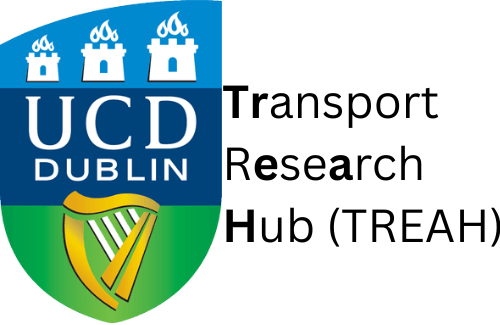
Negin Zarbakhsh (PhD Researcher) - Travel Behaviour, Smart Cities, Geotech
Negin Zarbakhsh is pursuing a PhD at the School of Computer Science, University College Dublin. Her research interests include modeling human mobility in terms of travel behaviour and the use of crowdsourced street-level imagery for recognizing points of interest in cities. Negin’s PhD research concerns the development of multimodal machine-learning algorithms to automatically classify dynamic points of interest within cities. In particular, her research focuses on the development of transferable machine learning models that can be trained across multiple modalities and cities. The outcomes can be used to provide up-to-date city maps in near real-time. This is of benefit to citizens, businesses, and city officials who can capture data on how a city is developing over time.
Email: Negin.zarbakhsh@ucdconnect.ie
University Web: https://ucdcs-research.ucd.ie/phd-student/negin-zarbakhsh/
Personal Web: https://www.neginzarbakhsh.com
GitHub: https://github.com/NeginZarbakhsh
Linkedin: www.linkedin.com/in/negin-zarbakhsh
Google Scholar: https://scholar.google.com/citations?user=NzFrj8oAAAAJ&hl=en
Twitter: https://twitter.com/NeginZarbakhsh
Publications:
1- Zarbakhsh N, Misaghian MS, McArdle G. Human Mobility-Based Features to Analyse the Impact of COVID-19 on Power System Operation of Ireland. IEEE Open Access Journal of Power and Energy. 2022 Mar 2;9:213-25. [PDF]
This study investigates the relationship between human mobility features and electricity consumption in Ireland. During the COVID-19 pandemic, non-pharmaceutical interventions (NPIs) had a significant impact on human mobility and changed travel behaviours, resulting in unexpected patterns of electricity consumption. This study evaluated the incorporation of several mobility-based features into machine learning prediction algorithms for peak electricity demand prediction in Ireland. The results can assist energy distributors and policymakers in gaining a better understanding of electricity consumption during COVID-19 by taking into account human travel behaviour.
2- Zarbakhsh N, Mcardle G. Predicting Traffic Congestion During Covid-19 Using Human Mobility And Street-Waste Features. Remote Sens. Spatial Inf. Sci., X-4/W3-2022, 301–308, https://doi.org/10.5194/isprs-annals-X-4-W3-2022-301-2022, 2022. [PDF]
With COVID-19’s prevalence and government efforts to curb its spread, urban travel behaviour significantly altered, resulting in a significant shift in traffic congestion. Rather than predicting traffic congestion based on historical data, this study aimed to model the correlation between travel behaviour and external mobility-related urban features. Dublin, in Ireland, was used as a case study. The research developed a novel interpretable machine learning model to predict traffic congestion changes in cities, where the findings could predict traffic dynamics in times of crisis based on mobility interventions and street waste volumes. The results can assist urban planners in designing a smart city with a resilient, intelligent transport system and allow authorities to understand the effects of interventions on travel behaviour.
3- Zarbakhsh N, Mcardle G. Points-of-Interest from Mapillary Street-level Imagery: A Dataset For Neighborhood Analytics, 2023 IEEE 39th International Conference on Data Engineering Workshops (ICDEW), Anaheim, CA, USA, 2023, pp. 154-161, doi: 10.1109/ICDEW58674.2023.00030
In this paper, we shared the open-source Mapillary POI-Neighborhood Street-Level Images (MPOINSLI) dataset that resulted from the combination of Safegraph datasets and Mapillary street-level images. This ground-breaking dataset includes 167,743 high-quality flat Mapillary street-view images with 6,732 distinct Points of Interest (POIs). What sets MPOINSLI apart is its comprehensive classification system under the NAICS system. We have classified the POI’s street-level images into 23 top categories, representing the general functionalities of POIs, and further divided them into 67 more specific sub-categories. This level of granularity enables in-depth analysis and exploration of neighborhood analytics centered around POIs for smarter cities.
 Dataset Link: https://lnkd.in/e-_7Ddec
Dataset Link: https://lnkd.in/e-_7Ddec Code Link: https://lnkd.in/ezbCpGDs
Code Link: https://lnkd.in/ezbCpGDs Youtube Link: https://lnkd.in/eFci3EbE
Youtube Link: https://lnkd.in/eFci3EbE
